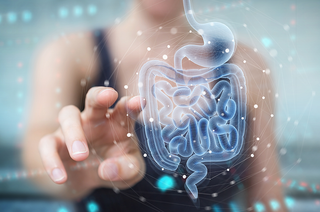Here’s something we don’t talk about nearly enough: Vaginal dryness. And we should, because vaginal dryness can cause all kinds of issues, like discomfort or pain while urinating or during sex and increased risk for infections (or more of them—if you’re prone to urinary tract infections). There are many reasons why women experience vaginal dryness, and menopause is one of them, if not the main one. In fact, it’s one of the most common symptoms of menopause, and also one of the least treated. Why? Probably because we don’t talk about it enough, not even with our doctors.
 |
 |
| 83% of women experience dryness... | ...yet only 7% treat it. |
the connection between menopause and vaginal dryness.
You may already know that estrogen production starts to decline when women begin to transition into menopause; this process usually starts in the early 40s, with perimenopause. But did you know the drop in estrogen levels usually also results in an increase in vaginal irritation and dryness? Estrogen is a highly lubricating hormone, and lower levels of estrogen leads to the thinning and drying of skin everywhere. These hormonal changes are also why we develop wrinkles and crow’s feet around our eyes. The same kind of thinning also occurs inside the vagina, the culprit of those aforementioned issues.
let's talk about (painful) sex.
Many women in the menopause transition might not notice vaginal dryness right away, especially if they’re not having regular sex. When they do, they probably turn to lubricants, which makes sense because that’s what we’re mostly aware of, thanks to advertising from lubricant brands (that usually features young couples looking to spice up their sex lives). The point is, lubricants are exactly what you should use if you’re experiencing painful sex, because sex should bring pleasure. But if you’re suffering from vaginal dryness due to menopause, vaginal lubricants aren’t treating the underlying issue; they’re more of a band-aid fix during a specific moment in time (hopefully many moments in time). And unfortunately, vaginal dryness isn’t a problem that’ll resolve on its own.

so how should vaginal dryness be treated?
The same way dry skin anywhere else on our bodies is treated: with a moisturizer. Ideally, one that’s formulated specifically for the vagina, with ingredients that draw moisture to the skin, and a formulation that enables the skin to absorb every last drop. The better it’s absorbed, the more it’ll benefit the skin (and the less it’ll stain your underpants).
The thing with moisturizers that is important to note: they’re not a cure. They’re a treatment. Like with any other kind of moisturizer you use to nourish and condition the skin on your face or body, for example, vaginal moisturizers also need to be applied regularly for you to continue experiencing the benefits.
let’s review.
- Lubricants are great for use during sex to increase pleasure and reduce pain, but they won’t help return moisture to the vaginal tissues. Lubricants are thick and viscous, designed to sit on top of the skin to provide vaginal lubrication and reduce friction during sexual intercourse. They are designed specifically not to be absorbed by the skin.
- Moisturizers, on the other hand, are designed to be absorbed into the skin, to help change the water content of the cells, to ultimately revive the skin tissue. The result? More elastic and plumper skin.
- Vaginal moisturizers are meant to be used regularly to maintain vaginal moisture, while lubricants are intended for episodic use, during sexual activity.
replenish your skin from within.
If you are experiencing vaginal dryness, a vaginal moisturizer can become your new best friend. When looking for a vaginal moisturizer, consider its ingredients. Always look for high-powered ingredients that are kind to the skin and body and are proven to work.
![]()
meet Via.
Via is a vaginal moisturizer that provides long-lasting effects when used regularly. Via is made with the highest-quality ingredients that were carefully selected to nourish and replenish your skin’s natural supply of moisture.
how is Via different from other moisturizers?
Via is a fresh look at what a moisturizer can be, based on today’s science. While a lot of vaginal moisturizers might claim to have similar ingredients, Via uses the highest-quality, next-generation, and medical-grade ingredients:

|
Hyaluronic acid (HA): A humectant that attracts moisture to your skin, replenishing its natural store of moisture. There are varying quality grades of hyaluronic acid, and Via contains Contipro HA, a standardized, well-researched pharmaceutical grade of HA. The highest quality available today.
|

|
A powerful blend of CoQ10, vitamin E, and vitamin C: Antioxidants that boost the skin cells. Via contains the most stable, bioavailable forms of these ingredients, and the specific combination is designed to increase absorption by the skin.
|

|
Peptides: Amino acids that help replace depleted collagen and elastin, aiding vaginal tissue hydration and resilience. |

|
Jojoba oil: Accelerates wound healing, promotes hydration, and maximizes delivery of other ingredients. The unique molecular structure of jojoba oil gives Via a smooth, non-greasy texture and better performance, absorption, stability and “slip properties” (which means Via can also be used during sex, although it won’t maintain its “slipperiness” as long as a lubricant will). |
More about Via:
Via has been cleared by the FDA for safety and efficacy.
Via is compatible with latex and polyisoprene condoms. It is not compatible with polyurethane condoms.











